Moto X Review
by Brian Klug on August 26, 2013 1:30 PM EST- Posted in
- Smartphones
- Qualcomm
- MSM8960
- Motorola
- Android
- Mobile
- Android 4.2
- Moto X
Display
Moto X is intriguing since it includes a relatively large 4.7-inch display in a form factor that isn’t nearly as big as other devices including similarly sized displays. Motorola has always been one to try new display technologies (I still remember when it tried an RG,BW LCD display), and in the Moto X moves to a Super AMOLED panel with the same subpixel unit cell as the Note 2. That’s pretty standard for Motorola, as Samsung will sell panels made on its n–1 AMOLED process to OEMs, and that’s exactly what we get here in the Moto X.
The Note 2 and Moto X display have a subpixel unit cell which includes a stacked red and green pixel, and adjacent blue pixel. The unit cell includes a full three subpixels per pixel (RGB), avoiding the loss of spatial resolution and color artifacts that arise from the other two subpixel per pixel unit cells we’ve seen in the past (RG,BG). As I wrote in the Note 2 review display section, I heard that this particular subpixel arrangement was called S-Stripe and was going to be branded, but it never was given an official name. Either way, the point of these alternative subpixel arrangements was always to offset the difference in luminous efficiency of the three subpixel types, and the resulting nonuniform geometry required to get the same luminance from each subpixel type. It does the job well and gives a full three subpixels per pixel. Samsung has also shrunk the size of subpixel unit cell down in order for Motorola to get 720p out of a 4.7-inch display.
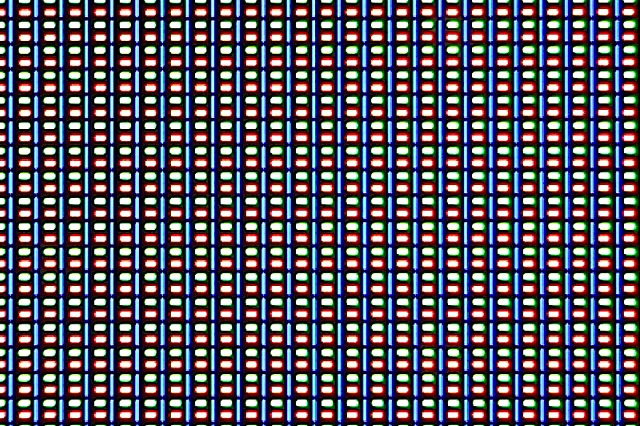
We’ve seen displays that are 1080p become the new bar for flagships in 2013, so the Moto X’s 720p display might initially sound like a minus. Including three subpixels per pixel however helps the Moto X out, enough for it to come in at 0.917 arcminutes per full pixel at 12 inches viewing distance, which is sufficient enough to beat normal human visual acuity of 1 arcminute. It’s a PPI of 312, which isn’t as crazy as the 450+ displays that are out now, but no slouch by any means. I can detect a difference between the Moto X and the really high DPI displays like the HTC One and SGS4, but it isn’t something that bothers me when using the Moto X.
| CalMAN Display Comparison | |||||||||||||
| Metric | iPhone 5 | iPhone 4S | HTC One X | SGS3 | Samsung Galaxy Note 2 | Google Nexus 4 | HTC Droid DNA | HTC One | SGS4 | Moto X | |||
| Grayscale 200nits Avg dE2000 | 3.564 | 6.162 | 6.609 | 4.578 | 5.867 | 7.686 | 6.738 | 5.391 | 7.511 | 3.782 | |||
| CCT Avg (K) | 6925 | 7171 | 5944 | 6809 | 7109 | 8506 | 8108 | 8118 | 7020 | 6873 | |||
| Saturation Sweep Avg dE2000 | 3.591 | 8.787 | 5.066 | 5.460 | 7.986 | 8.517 | 5.856 | 3.365 | 7.823 | 6.268 | |||
| GMB ColorChecker Avg dE2000 | 4.747 | 6.328 | 6.963 | 7.322 | 8.185 | 7.531 | 6.687 | 4.656 | 7.440 | 5.771 | |||
Motorola doesn’t seem to mess around too much with dynamic everything features for display that I really don’t like, nor does it have a crazy auto brightness curve. I still will personally take an LCD display over AMOLED, but the characteristics of this panel are relatively well behaved. Only if you force brightness to absolute zero does there start being visible purple color shift, something which long has been an issue for AMOLED panels. The days of mura (luminance irregularities which looked like grain) and splotches however are gone, there’s none of that in the Moto X display.
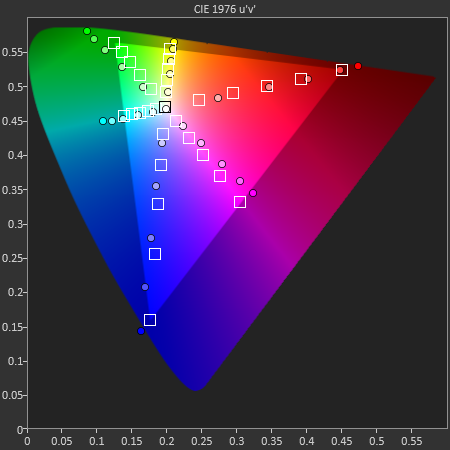
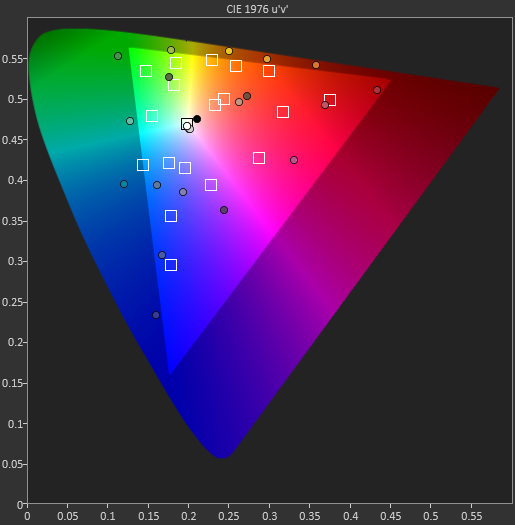
I measured the Moto X in our display suite and unfortunately the other axis of AMOLED, oversaturation, still continues here. The Moto X display is wildly oversaturated, with saturations that blow past the sRGB values we expect or want. On the upside, the color temperature is controlled and not the usual blue that we see with AMOLED, at an average of 6800K across the greyscale it’s not bad at all by comparison, though it does get slightly above 7000K at 100 percent white. Subjectively however it isn’t the annoying level of blue that I am used to seeing. Also the greyscale delta-E surprised me from the Moto X, it’s not very high at all.
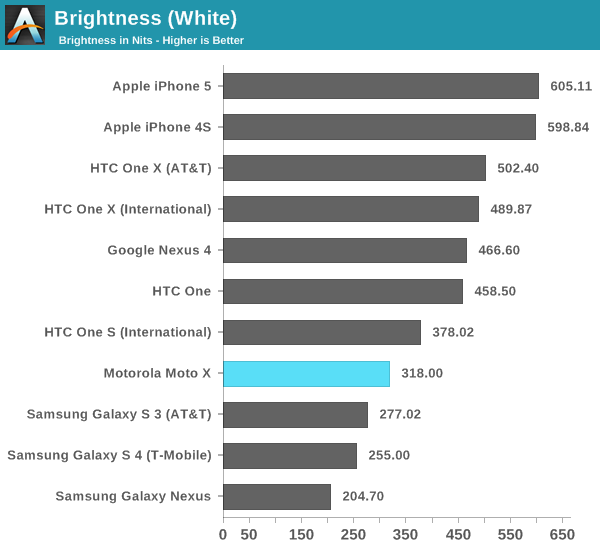
The Moto X display is an interesting one which leaves me feeling mixed. It uses a new, smaller pixel pitch version of the subpixel arrangement we saw with the Note 2, and it’s better behaved than the Samsung calibration of that panel. At the same time the color space issues persist along with power draw, but Motorola deserves kudos for not having annoying dynamic brightness functions. I personally still will take a high DPI, well tuned LCD display over AMOLED, and like the 1080p LCDs we’ve seen from JDI and Sharp in recent devices, but I understand that Motorola had to go AMOLED here for the active display feature to not absolutely destroy battery life. The matter of resolution also still is there, but 720p at this size with a solid 3 subpixels per pixel isn’t a deal breaker.
Sound
Lately I've been getting more and more jaded about line out quality on devices. There's something about close proximity to a transmitter and the confined spaces in a smartphone that makes getting good clean audio a challenge for everyone. That said I was impressed by the sound quality on the Moto X both on line out, on calls, and on the speakerphone. I'm doing subjective reviews of audio line out quality until we get a new testing methodology from our Display (and Audio guru) Chris Heinonen, after he gets access to a new test bench. I listened to a lot of music while traveling on the Moto X using my Shure SE535 IEMs and came away pretty impressed. I've heard a lot of smartphones that either lacked a lot in the mids, had discernable noise, or various issues driving IEMs at low volume, but I didn't encounter anything negative on the Moto X.
On phone calls, I was actually shocked by how good the Moto X sounded. I had no problems hearing people on the other end, and found myself wanting the Moto X when I wasn't using it. The rounded top and sides also make the Moto X very comfortable to hold to the face. I am still surprised by the fact that I'm drawn to the Moto X because of how much different in a positive way it sounds from some of the other handsets I've played with recently, especially when on conference calls. I heard positive feedback from the terminating side of the call as well, that I sounded good on both speakerphone and handset mode.
Oddly enough though the Moto X didn't do too well in my ambient nose rejection test which consists of a babble distractor track played at volume that ramps up and then back down. There's still a lot of background noise that leaks through in that test, although when I called from a few loud locales and asked for feedback I always heard that noise level was acceptable.
The Moto X undoubtely uses a beamformer created by the front microphone and back microphone, used in a pair, with the top microphone reserved for speakerphone mode and stereo audio when recording videos.
The speakerphone goes very loud as well, without distorting. The Moto X includes an NXP TFA9890 speakerphone driver with boost and active protection. We've seen this and similar solutions get used a lot to good effect this generation, and the Moto X reflects that loudness in our speakerphone test. I was frankly shocked how loud the thing goes. The downside is that it's still mono (so the HTC One is still a better choice for music) and seems to have different behavior for music, but on calls the speakerphone goes very loud without distorting.


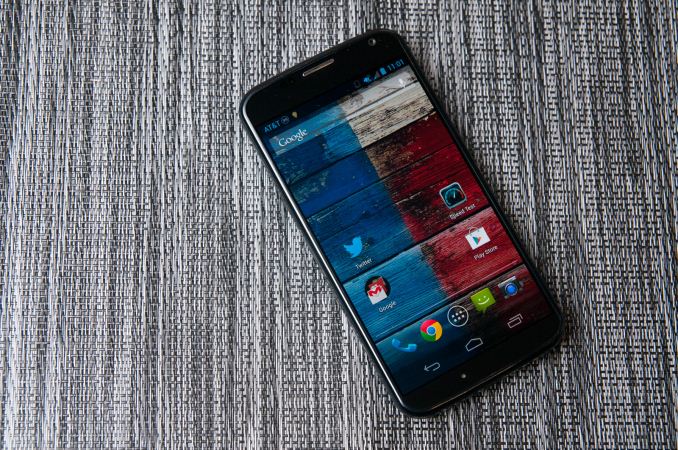
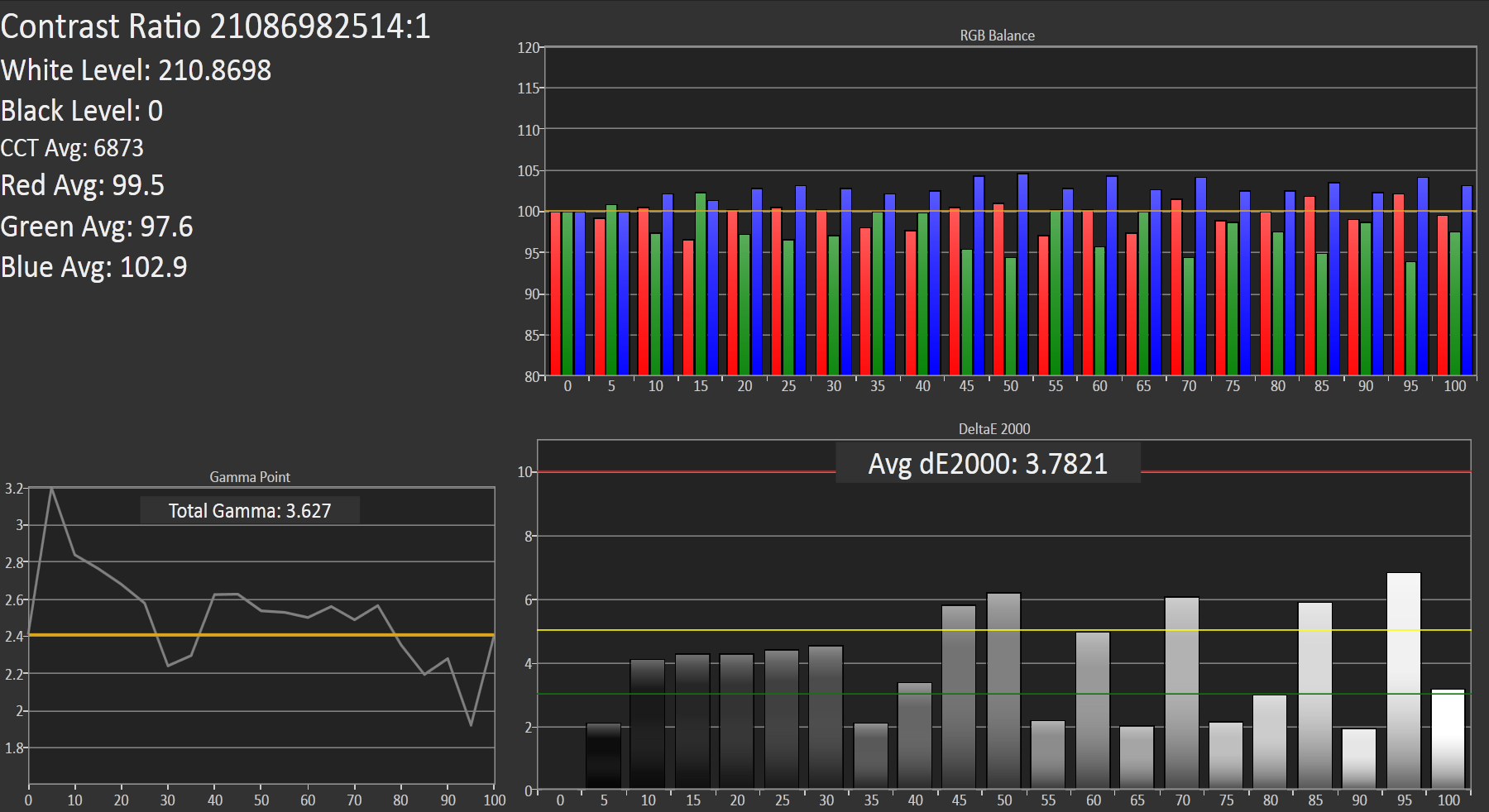

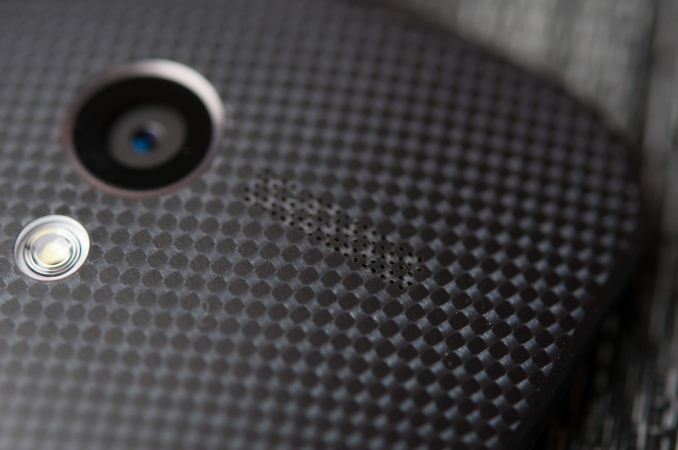
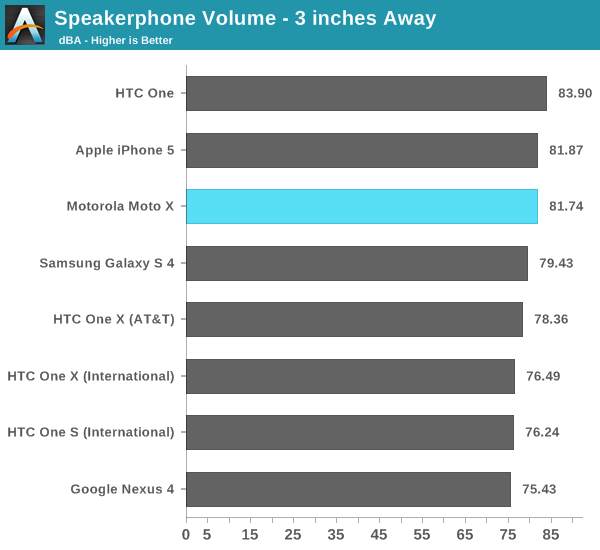








105 Comments
View All Comments
smitty123 - Monday, August 26, 2013 - link
" You have to also be close by, Moto X isn’t going to turn on when you’re across a big room, for example. In addition I’ve noticed that for some reason there are some odd false positives."i don't like to feel like my spied on.
So to me it just sounds like we have a new thing to test: the distance at which the phone can hear us.
Not hear the magic phrase, just how far from us it can still hear us with its 3 mics. forget the "it can't understand us" i'm not testing if it can recognize words, i'm just not comfortable knowing if it can record conversations that a human, nsa for example, can understand. with obama going for the warantless conversation recording, let's just say, this isn't a phone i'd want near me.
That old big brother spying thing is here, i think in the interest of privacy, we need to know these things before buying the phone.
i for one will never get an xbox one just for that reason.
good luck but i'm going back to good old rotary phones lol
flyingpants1 - Wednesday, September 18, 2013 - link
All phones can do that, genius.AnnonymousCoward - Tuesday, August 27, 2013 - link
Does the UI have lag between Android menu screens? Is the touch-screen at least as responsive as every Iphone to come out?I'm guessing there's still plenty of UI lag. In the future, UI's will be instant.
eallan - Tuesday, August 27, 2013 - link
It's pretty responsive, I've had some hiccups and frame rate drops though.Honest Accounting - Monday, September 16, 2013 - link
In the general UI or specific applications?Krysto - Tuesday, August 27, 2013 - link
Maybe it got offset by the last-gen AMOLED tech. Here's the thing. If you're going to argue for efficiency, then don't just use an "old panel". Obviously that won't help. You need to use the latest technologies, the most efficient ones, and THEN lower the resolution and the clock speed of the CPU and GPU.So let's say the latest AMOLED is 2x more efficient than the n-1 before it, at the same resolution. But at 1080p (2x more pixels) it uses just as much power compared to the 720p one. Then I want the latest AMOLED with 720p, to benefit from that improvement in efficiency. If I use the old one with 720p, or the new one with 1080p, then I won't see any improvement in battery life.
Same for the CPU and GPU. Let's say Motorola wanted to hit the performance target of S4 Pro, in both CPU and GPU. Great. But to gain extra efficiency, it would've been ideal to use the S800's CPU at 1.5/1.7 Ghz (instead of 2.3 Ghz), and Adreno 330 at half the clock speed (to match Adreno 320's performance).
That's how you get the extra efficiency. We don't really see new phones that are much better in power consumption than last year's models, because the OEM's keep pushing for performance or resolution or whatever, which completely cancels out whatever efficiency gains they might've had.
But this is our fault, too. Because we keep caring about benchmarks and who's e-penis is bigger, to the point where the OEM's have the incentive to cheat on these benchmarks, to get good PR from it.
If we really want to see better battery life, then act like you don't care about performance anymore (because it has gotten good enough anyway), and ask for 2-day battery life (then heavy users might finally get a full day).
Impulses - Tuesday, August 27, 2013 - link
The whole efficiency line on Motorla's part is probably half marketing spin anyway, I'm sure cost and logistics played as large a role into the component selection as efficiency, even features (the active display stuff would've been impossible w/more common LCD displays, etc). At the end of the day, the only phones that have made monumental battery life strides have been their MAXX editions, by just packing a much larger battery... It seems current gen phones often catch up to last gen MAXX phones in one or two tests tho.If they were really trying to go for battery life above all they'd not only sacrifice some performance but some device thickness, and introduce a phone w/a MAXX-like battery as the only SKU w/no smaller battery model below it. I'm surprised more OEMs aren't putting out slightly thicker phones at times w/3,000mAh batteries like Moto, like not even one OEM has...
michaelljones - Tuesday, August 27, 2013 - link
Brian, Anand,I know I'm commenting awfully low in this list to get seen, but I'd like to see a little more love for Windows phone in some of your comparison graphs. Throw in at least a token Lumia please (or more if you like!)?
I'm a happy Windows Phone user (like many I think), but I have no way to quantitatively compare my Lumia 928 to any of the other handsets. With cameras that kick ass, I can't see how they aren't a comparable discussion.
teiglin - Tuesday, August 27, 2013 - link
Two Lumias feature prominently in the camera section, and more are in the full gallery of camera comparison shots. I mean, yeah, Brian clearly knows that Nokia kicks everyone else's cameras in the nuts, and it shows.Beyond that, where do you want to see the Lumias? I don't think Brian ever got a working Windows Phone battery life test because of screen timeout issues (not to mention the absence of precision brightness controls makes it hard to compare to controlled 200 nit settings), so that leaves javascript benchmarks and display quality. I guess those would be nice to see in the appropriate charts.
michaelljones - Tuesday, August 27, 2013 - link
No mention on the screen page of any other Lumia devices and their types or quality of screens, only a host of Androids and a Apple. No CALMAN data.No speaker phone comparisons. The 928 Nokia crows all about the speaker phone for crying out loud. I want to know if it's really that good or if it really sucks that bad comparatively speaking.
No call time and battery tests. The call time is an open freakin phone call for crying out loud. I could have done that on my StarTac in 1997. Also no charge time comparison, despite the fact that there are a half dozen apps in the Windows Store that will measure this.
I believe several of the tests used in the CPU test are browser tests, and run just fine on a Lumia.
Last I knew GFXBench ran on Windows Phone, yet it's nowhere to be seen in the graphs. (maybe it's pathetic, but at least show it). http://gfxbench.com/result.jsp?site=dx
The camera section DOES have some pics from the Lumias, but fails to mention anything about them in the discussion, nor mention that Brian has them and that reviews are coming, etc. etc. other than an oblique reference to how he likes having access to the controls of the camera ala Lumia 1020. (and no mention of how the 1020 mops everything in the photo comparison as has been widely crowed with every other smart ass smart phone before this i.e. iPhone 5). Also no mention if those 1020 pictures are full 45MP or cropped ones.
I'm not asking for a chart that takes away from the phone in question by any means. I'm just asking for a fair and balanced view of the current Windows Phone offering(s) comparatively speaking. WP has it's own benefits and it's own downfalls, and I'd like to see them compared to others in an honest way.
See http://www.notebookcheck.com/Test-Nokia-Lumia-925-... as an example (granted it's in German, but the charts prove my point that these comparos could be a bit more balanced and not 9 Android phones against 1 iPhone and NO Windows Phone)